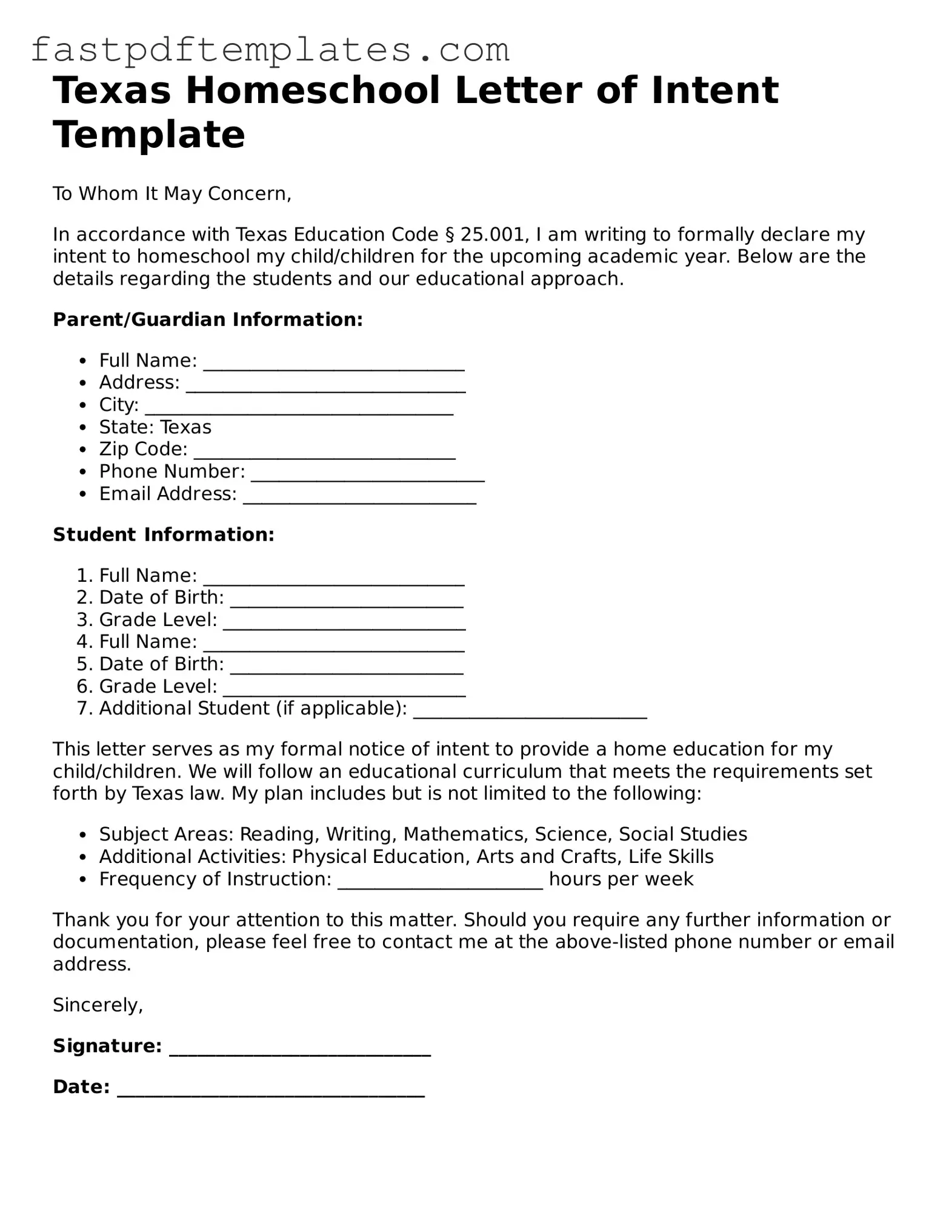The Texas Homeschool Letter of Intent form shares similarities with the Affidavit of Intent to Homeschool, which is often required in various states. This document serves as a formal declaration by parents that they intend to educate their children at home. Like the Texas form, the affidavit typically requires basic information about the student and the parent, ensuring that the intent to homeschool is clearly communicated to the appropriate educational authorities.
Another related document is the Notice of Intent to Homeschool, which is used in several states. This notice must be submitted to local school districts to inform them of a family's decision to homeschool. Similar to the Texas form, it includes details such as the names of the children being homeschooled and the educational curriculum that will be followed, providing transparency to the school district about the family's educational plans.
The Individualized Education Program (IEP) is also comparable, especially for families who choose to homeschool children with special needs. While the IEP is more detailed and tailored to the specific educational requirements of a child, it, like the Texas Homeschool Letter of Intent, requires the involvement of parents in outlining educational goals and methods. Both documents emphasize the importance of a personalized approach to education.
The Enrollment Form for Private School is another document that bears resemblance to the Texas Homeschool Letter of Intent. This form is used when parents decide to enroll their children in a private educational institution instead of public school. Both documents require parents to provide information about their child and their educational plans, reflecting a commitment to a non-traditional educational path.
The Curriculum Plan is similar in that it outlines the educational framework a family intends to follow while homeschooling. While the Texas form indicates the intent to homeschool, the curriculum plan goes a step further by detailing the subjects and materials that will be utilized throughout the academic year. Both documents highlight the importance of a structured approach to education.
In addition, the Annual Assessment Form is akin to the Texas Homeschool Letter of Intent in that it serves as a means of accountability. This form is often required to demonstrate that homeschooled children are making academic progress. While the Letter of Intent announces the decision to homeschool, the Annual Assessment Form provides evidence of ongoing educational engagement and achievement.
The Withdrawal Form from Public School is another document that parallels the Texas Homeschool Letter of Intent. This form is necessary when parents decide to remove their children from a public school setting to begin homeschooling. Both documents signify a transition in educational environments, emphasizing parental choice in how education is delivered.
The Educational Philosophy Statement can also be compared to the Texas form. This document allows parents to articulate their beliefs and values regarding education and how they plan to implement them in a homeschool setting. Both documents reflect a commitment to a unique educational journey, showcasing the parents’ intentions and approaches to learning.
Finally, the Notification of Homeschooling to Local Authorities can be likened to the Texas Homeschool Letter of Intent. This notification is often required to inform local education authorities of a family's decision to homeschool. Like the Texas form, it ensures that officials are aware of the educational choices being made and helps maintain communication between families and educational institutions.
